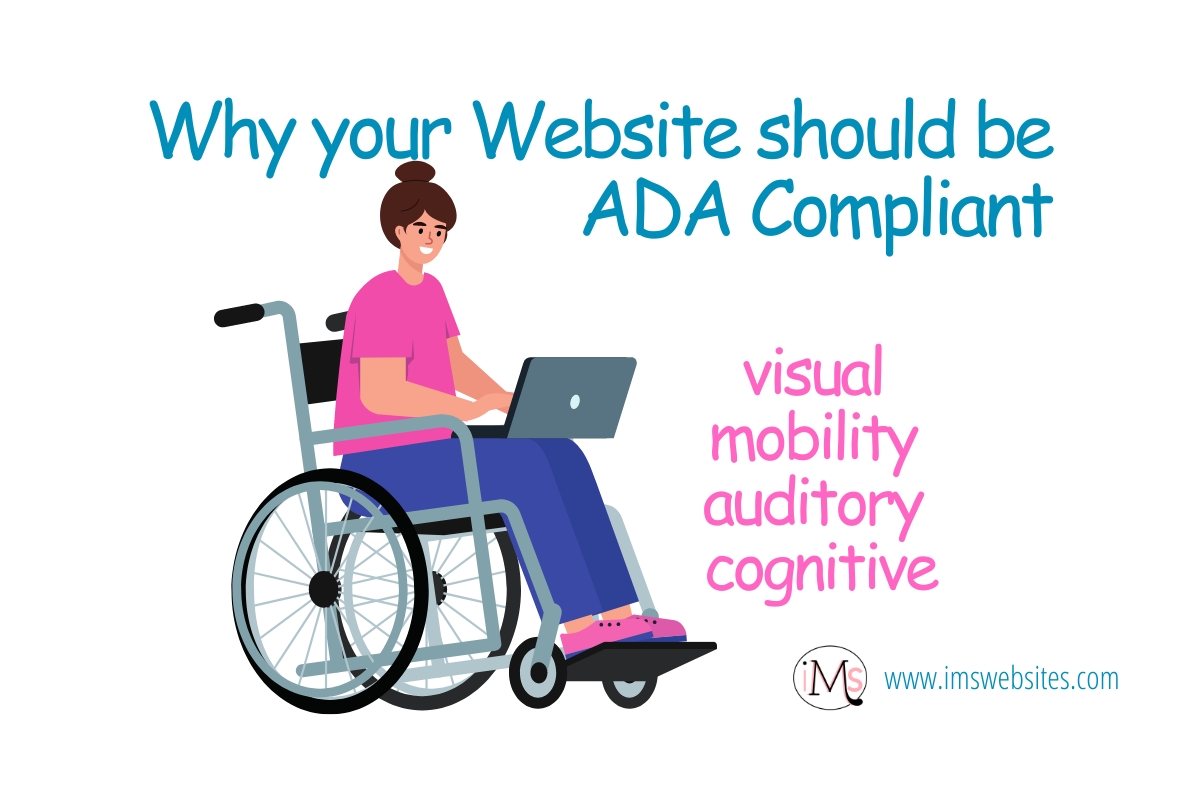Why Your Website Should Be ADA Compliant
If you have a website for your business, you might think that it is accessible to everyone who visits it. However, this is not always the case. Many people with disabilities face barriers when trying to access web content that is not designed with their needs in mind. This can result in frustration, loss of customers, and potential legal issues.
The Americans with Disabilities Act (ADA) is a law that protects people with disabilities from discrimination in many areas of public life, including employment, education, transportation, and public accommodations. The ADA also applies to websites that offer goods or services to the public or are operated by state or local governments.
According to the ADA, websites must provide “reasonable accessibility” to people with disabilities. This means that web content must be perceivable, operable, understandable, and robust for users with various types of impairments. Some examples of web accessibility issues are:
- Poor color contrast. People with limited vision or color blindness cannot read the text if there is not enough contrast between the text and the background.
- Use of color alone to give information. People who are color-blind may not have access to information when that information is conveyed using only color cues because they cannot distinguish certain colors from others. Also, screen readers do not tell the user the color of text on a screen, so a person who is blind would not be able to know that color is meant to convey certain information.
- Lack of text alternatives on images. People who are blind will not be able to understand the content and purpose of images, such as pictures, illustrations, and charts, when no text alternative is provided. Text alternatives convey the purpose of an image.
- Videos. People with hearing disabilities may not be able to understand information communicated in a video.
- Inaccessible online forms. People with disabilities may not be able to fill out, understand, and accurately submit forms without proper labeling that screen readers can convey to their users.
- Mouse-only navigation (lack of keyboard navigation). People with disabilities who cannot use a mouse or trackpad will not be able to access web content if they cannot navigate a website using a keyboard.
These are just some of the common web accessibility problems that can affect your website’s usability and performance. If your website is not ADA compliant, you could be missing out on potential customers who have disabilities or who use assistive technologies such as screen readers or voice recognition software. You could also face legal consequences if someone files a complaint against your website for violating their rights under the ADA.
The Department of Justice has been enforcing web accessibility requirements under the ADA since 1996. The Department has reached numerous agreements with businesses and state/local governments across the country that include web accessibility provisions.
As you can see, web accessibility is not only a legal obligation but also a good business practice. By making your website ADA-compliant, you can reach more customers, improve your reputation, and avoid costly lawsuits.
However, creating an ADA-compliant website is not an easy task. It requires technical knowledge, design skills, and testing. You also need to keep up with the latest Web Content Accessibility Guidelines, which are internationally recognized.
Join me on this journey toward a more inclusive and accessible digital presence, where we bridge the gap between your website and all visitors, regardless of their abilities or disabilities.
Feel free to reach out with any questions.
Mary Ann Hill, Internet Marketing Solutions Agency, LLC. www.imswebsite.com

